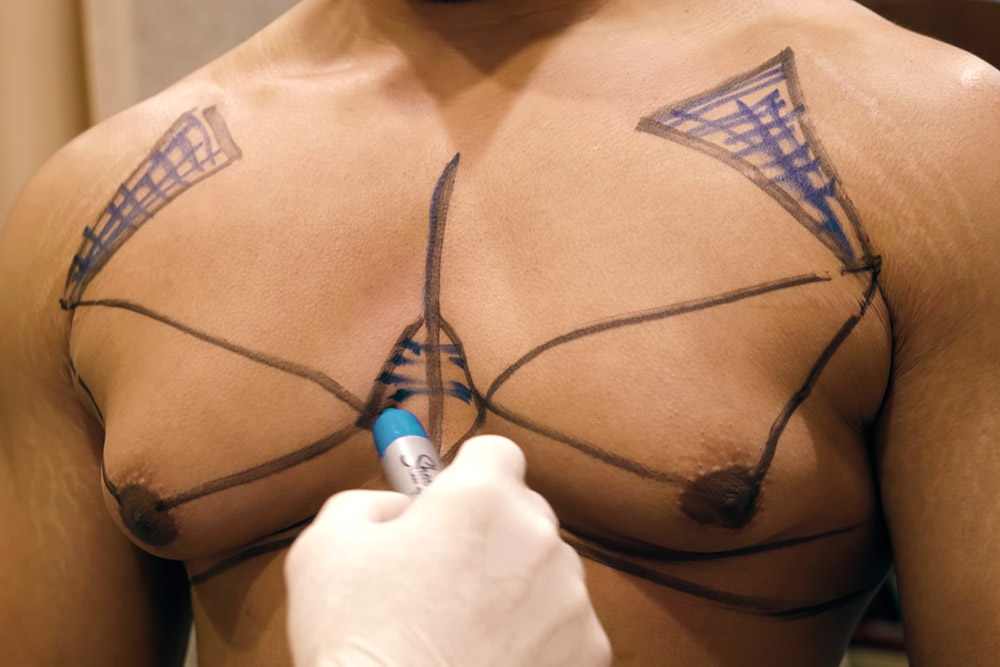Gynecomastia
What is gynecomastia?
Gynecomastia is the condition in which the low level of estrogen hormone in men increases and the enlargement of the breast tissue occurs. Gynecomastia, which is observed in 40-60% of men, can develop in newborns, adolescence and old age.
The causes of gynecomastia are very diverse. The most known of these are hormonal disorders, thyroid disease, testicular and adrenal gland tumors. In addition, breast enlargement in men and the formation of a feminine appearance affect the psychosocial lives of the patients most negatively.
Causes of Gynecomastia?
Gynecomastia is a problem that occurs as a result of hormonal imbalance. It is revealed as a result of changes in estrogen and testosterone hormone levels in men. Natural causes or inherited disorders may underlie the increased estrogen or decreased testosterone amount.
The main reasons for the emergence of gynecomastia;
- It is often observed during adolescence, when natural hormonal changes occur, and this is usually temporary.
- Drugs used in the treatment of various diseases can cause gynecomastia as a side effect.
- Habits such as smoking, alcohol and substance abuse can cause it.
- Serious health problems such as hyperthyroidism, chronic kidney disease, and cirrhosis can also lead to the development of gynecomastia.
- In infancy, intense estrogen levels may exceed with breastfeeding, which may cause gynecomastia in newborn babies.
- Along with andropause, the testosterone hormone decreases and the estrogen level in the body increases with advancing age. Gynecomastia may also occur as a result of hormonal imbalances.

Gynecomastia Treatment
There are various reasons for the emergence of gynecomastia and it is very important to determine the underlying cause in order to apply a correct treatment. Before starting the treatment, the person should undergo a detailed examination in consultation with the necessary specialists, especially the endocrinologist.
Depending on the type of gynecomastia, the treatment method also changes.
Gynecomastia Treatment with Medication:
The main task of the drugs used in the treatment of gynecomastia is to eliminate the hormone imbalance. Medication may not always respond.
Surgical Procedures:
Surgical methods such as liposuction can be used to reduce the fat tissue in the breast area.
Gynecomastia Surgery:
Surgery is required for the definitive solution of the gynecomastia problem. The surgery is performed under open and general anesthesia. With gynecomastia surgery, it is aimed to remove hard breast tissue or adipose tissue, and in some cases both.
Gynecomastia Surgery
Surgery is the most frequently used method for solving the gynecomastia problem. Surgical treatment also varies according to the stages of gynecomastia. The type of treatment that the patient needs is evaluated during the preliminary examination. Gynecomastia types are grouped as excess of hard breast tissue, excess of adipose tissue, excess of both hard breast tissue and adipose tissue, and excess skin.
In cases where the adipose tissue is excessive in gynecomastia, treatment with liposuction is applied. Surgery is preferred for problems caused by hard breast tissue. If the patient has more adipose tissue and hard breast tissue, surgery and liposuction are applied together.

In gynecomastia surgeries performed with liposuction, inlets are opened from the sides of the chest and cannulas with one end connected to the vacuum are placed. With the reverse pressure vacuum feature, excess fat tissue is removed and a smooth skin is obtained by preventing the feminine appearance.
In cases where liposuction application is insufficient, incisions are made from the lower part of the breast with open surgery, excess skin and hard breast tissue are removed, and then closed with the help of sutures. Gynecomastia surgeries take an average of 2 hours and are performed under local or general anesthesia, depending on the type of treatment.
Recovery After Gynecomastia Surgery
After the gynecomastia surgery, the patient is discharged on the same day. It is recommended to rest for 1 week following the surgery and to renew the dressing frequently. It is necessary to use the drugs given by the doctor to reduce the pain that will occur after the surgery.
After the operation, special corsets are given to the patient. The patient can return to work life within 1 week, provided that he uses a corset and does not force the arms too much. Within weeks, swelling and edema decrease, the skin begins to recover and visible results are obtained.
Today, individuals who encounter the problem of gynecomastia can achieve an aesthetic appearance by regaining their health in a short time with various treatment methods. It is very important to work with experienced doctors and a team of experts in order to identify the problem and develop the appropriate treatment method.
Images from Operations







